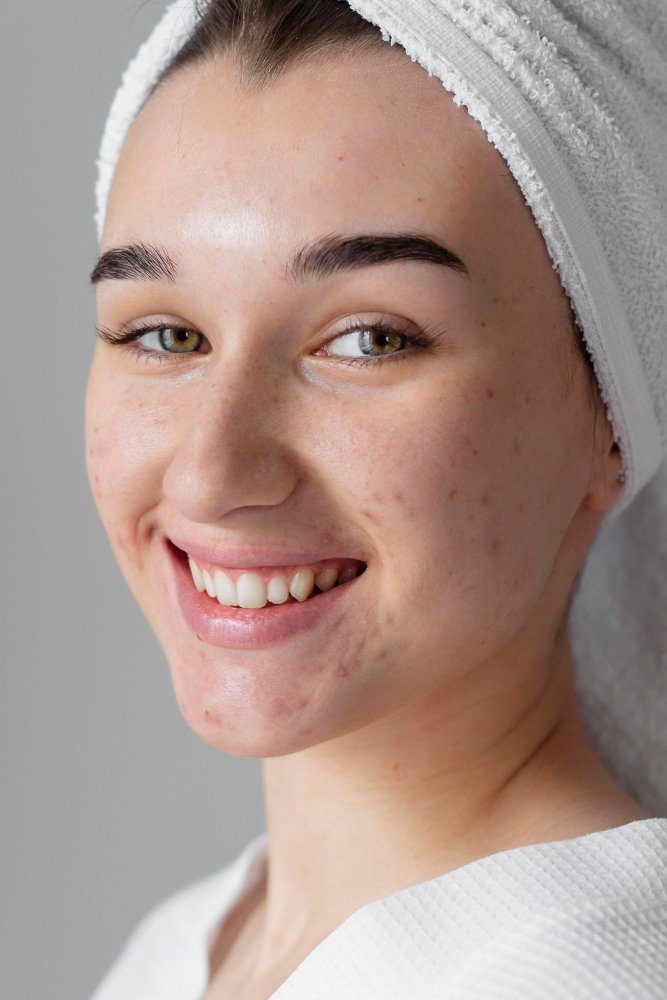Melasma is one of the most stubborn skin conditions to treat—especially because it doesn’t respond the same way for everyone. Your skin type plays a crucial role in how melasma appears and how it should be treated. In Korea, dermatology clinics offer advanced, skin-type-specific treatments that combine medical precision with cutting-edge technology. Here’s a breakdown of how your skin type affects melasma and how Korean clinics personalize treatment plans for optimal results.
🌍 Understanding Skin Types and Melasma
Melasma is caused by overactive melanocytes (pigment-producing cells), which can be triggered by UV exposure, hormones, heat, inflammation, and even stress. But how your skin responds depends heavily on your skin type:
🔸 Fitzpatrick Skin Type Scale
This scale classifies skin based on its reaction to sun exposure:
| Type | Characteristics | Melasma Risk |
|---|---|---|
| I-II | Fair, burns easily | Low–Moderate |
| III-IV | Light brown to olive | High |
| V-VI | Brown to dark brown/black | Very High |
Korean clinics typically see a high volume of patients with Type III–IV, common in East Asian populations—skin that tans easily but is prone to post-inflammatory hyperpigmentation (PIH) and melasma.
🧬 How Korean Clinics Customize Melasma Treatments Based on Skin Type
1. Sensitive, Fair Skin (Fitzpatrick I–II)
- Common traits: Thin, reactive, redness-prone
- Melasma pattern: Light brown patches, easily triggered by sun and heat
- Recommended treatments in Korea:
- Low-strength laser toning (Q-switched Nd:YAG at low fluence)
- Topical treatments: Niacinamide, azelaic acid, and mild hydroquinone (under prescription)
- LED Light Therapy: To calm inflammation
✅ Gentle protocols are essential—fair skin is more likely to scar or become irritated from aggressive treatments.
2. Medium to Olive Skin (Fitzpatrick III–IV)
- Common traits: Balanced to oily, tans gradually, common in East Asian patients
- Melasma pattern: Mixed pattern (epidermal + dermal), often recurrent
- Recommended treatments in Korea:
- Laser toning with melasma-specific settings (e.g., Spectra XT, PICO Toning)
- Microneedling with tranexamic acid or Vitamin C infusion
- Mesotherapy: Injections of anti-pigmentation agents (like glutathione or TXA)
- Customized skincare: Incorporating Korean hanbang ingredients like licorice root, centella asiatica, and arbutin
✅ This skin type responds well to combined modalities but requires consistency and long-term maintenance.
3. Darker Skin (Fitzpatrick V–VI)
- Common traits: High melanin content, resistant to sunburn but prone to hyperpigmentation
- Melasma pattern: Deep, dermal pigmentation; often more difficult to treat
- Recommended treatments in Korea:
- Low-energy PICO lasers only, with extreme caution to avoid rebound pigmentation
- Oral tranexamic acid, often prescribed short-term under medical supervision
- Topical agents: Kojic acid, azelaic acid, and licorice extract over hydroquinone
- No aggressive chemical peels or ablative lasers
✅ Melanin-rich skin is more prone to PIH, so Korean clinics focus on gradual improvement over months—not quick fixes.
🧴 Korean Skincare Tailored by Skin Type + Melasma
For Dry/Sensitive Skin with Melasma:
- Ingredients to look for: Hyaluronic acid, madecassoside, ceramides
- Avoid: Alcohol-based toners, harsh exfoliants
For Oily/Acne-Prone Skin with Melasma:
- Ingredients to look for: Niacinamide, tea tree, azelaic acid
- Avoid: Pore-clogging heavy creams
For Combination Skin:
- Dual approach: Lightweight hydration + brightening serums
- Product tip: Layer watery essence before treatment ampoules
Recommended Korean Brands:
- Torriden (Diving line – hydrating)
- Isntree (Mugwort or Green Tea lines – anti-inflammatory)
- By Wishtrend (Vitamin C + niacinamide combos)
🏥 Korean Clinic Treatments to Ask For (Tailored by Skin Type)
| Treatment | Best For | Clinic Notes |
|---|---|---|
| Pico Toning | All skin types, esp. III–IV | Gentle and effective for stubborn dermal melasma |
| Mesotherapy (TXA or Glutathione) | Skin Types III–VI | Minimizes pigmentation from within |
| Skin Boosters + Whitening Injections | Dull or uneven skin tones | Often paired with laser sessions |
| BB Laser (Melasma-specific) | Combination melasma | Available at many Seoul clinics |
| Prescription Creams | Sensitive skin | Hydroquinone, tretinoin, or triple cream options under derm care |
🔍 Choosing the Right Korean Clinic
When selecting a clinic in Korea for melasma treatment:
- Look for dermatologists with laser safety certification
- Choose clinics with experience treating your skin type
- Ask about custom protocols (not one-size-fits-all treatments)
- Consider clinics in Gangnam, Apgujeong, and Sinsa-dong for cutting-edge care
🏥 Popular options include: Banobagi Dermatology, Oracle Clinic, and Leaders Clinic.
✨ Final Tips for Success
- Track your triggers: Hormonal changes, heat, and new products can worsen melasma
- Stay patient: Visible results often take 8–12 weeks
- Follow clinic guidelines: Especially after procedures like lasers or mesotherapy
- Don’t skip sunscreen—ever! UV protection is 90% of melasma control
📌 Summary: Skin-Type Smart Melasma Care in Korea
| Skin Type | Clinic Strategy |
|---|---|
| Fair (I–II) | Low-intensity lasers, anti-inflammatory topicals |
| Medium (III–IV) | Laser toning, mesotherapy, TXA |
| Dark (V–VI) | PICO laser (low fluence), oral TXA, topicals only |
| Dry/Sensitive | Hydration + barrier repair focus |
| Oily/Acne-Prone | Niacinamide + light peels (under derm care) |




